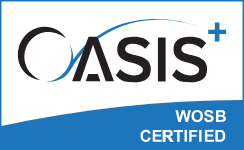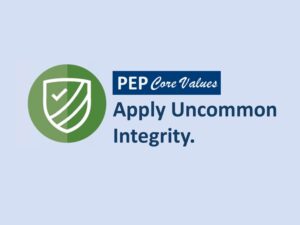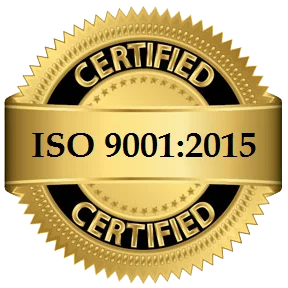
In my previous blog, “What My Company Learned as an Early Adopter of Remote Work,” I explained how PEP worked as a fully or mostly remote organization right from our inception – at a time when working virtually was a rare practice. I also shared some of the strategies we have used throughout the years to build solid relationships among our staff and maintain a productive collaborative environment.
Here, I’ll highlight some of the tools we use to operate efficiently as a virtual workplace and how we meet the unique challenges of managing a remote workforce, namely:
- Internal management
- Project management
- Information storage & sharing
- Communication, meetings & collaboration
Internal Management
For PEP, as a federal contractor continually reviewing and responding to bid opportunities, robust proposal and business development tools are a must-have. And, with one of our leading capabilities being Human Capital Services, we recruit and hire large numbers of contract workers. So, a digital assist in Human Resources offers a good return on investment as well.
Further, PEP is a small company whose corporate team members all wear a few different hats. That, and being split between the East and West Coasts, requires us to prioritize our long-term planning to prevent it from getting lost in the shuffle of day-to-day operations.
TOOLS WE USE
Business Development
- BD Dashboard: We track our business development activity with this Excel file we created. It has a summary tab, a pipeline tab, another with details on opportunities we are pursuing, plus tabs for proposals submitted, contract awards, and anticipated contract income for the next five years.
- Opportunity Qualifying Checklist: This helps us assess our strengths in relation to an RFQ and its contract requirements to help us decide whether to pursue a particular opportunity.
- Proposal Management Tool: This Excel sheet provides a high-level snapshot of the proposal structure with assignments, key personnel details, and the schedule.
Human Resources
- BambooHR: In 2022, we started transitioning our on-boarding, employee notifications, and payroll functions to this platform, which is streamlining our personnel processes and reducing the workload for our Director of Operations.
General Corporate Management
- The Entrepreneurial Operating System (EOS) and “Rocks”: Using the EOS methodology, as detailed in the book Traction: Get a Grip on Your Business, we have clarified our vision, re-examined our structure and processes, and revamped our approach to resolving issues and achieving our goals.
- We make ongoing use of the concept of “rocks” – 90-day priorities divided among our corporate team – to keep us focused on our long-term goals. Regular meetings and to-do lists keep us moving forward on these tasks.
- Ninety.io: This cloud-based platform designed for companies using EOS offers us a suite of tools that we can share company-wide and use in collaboration. It allows us to:
- Capture and archive company-wide processes in a central location.
- Track our progress toward our goals.
- Document and archive meeting activity, share action items across teams, and even create to-do lists mid-discussion.
ISO Certification
- CORE: We use this software to manage our documentation and reviews for our ISO 9001:2015 quality assurance certification.
Project Management
In our core business of supporting government agencies, PEP executes up to 16+ complex projects every year, and high-quality project management is of the utmost importance to our customers. While each contract has different requirements, our approach to organizing the work, delivering services, and keeping the client informed is consistent.
TOOLS WE USE
- Phone or video conferencing: These are still the most direct and reliable means of communication for project teams holding their regular (often weekly) status meetings.
- Project Management Institute (PMI) Best Practices: The world’s leading project management organization, PMI offers templates and project plans for a variety of industries and project types. Our project management approach is guided by their Project Management Body of Knowledge (PMBOK).
- PEP’s project-specific tracking tools:
- Project plans, work breakdown structures, and integrated master schedules are used to plan the work, allocate resources, monitor progress, meet deadlines, ensure quality, and inform status reports.
- For technical assistance (TA) contracts, TA plans formulated at the start of each year enable us to map out a content delivery plan, make real time adjustments as subject matter experts (SMEs) are secured and pressing needs are identified, and provide timely and relevant services to grantees.
- Consultants (TA coaches and SMEs) and subcontractors submit monthly status reports for the grantees or project aspects they support.
- Budget tracking tools, built in Excel, allow project managers to track the budget and labor usage in real time and are used to proof invoices and develop budget realignment requests.
Information Storage & Sharing
Going remote requires a digital storage space where corporate files can live and project materials can be archived. Remote work teams need an efficient way to share documents that they are developing. And, as mentioned previously, our busy Human Resources department – a particularly document-intensive unit in any company – benefits from a digitized system.
Electronic files, in addition to providing a way to work together while apart, reduce the use of paper and printing, making your organization more eco-friendly while reducing costs, clutter, and the need for physical storage space.
TOOLS WE USE
- SharePoint: This cloud-based shared drive is the main repository for PEP’s project files, corporate information, and procedures. Once we had fully developed an organizational system for the drive, we created a reference sheet that explains the filing system structure, file locations, and naming protocols for documents and folders.
- BambooHR: In addition to making our hiring and other personnel processes more efficient, BambooHR provides a digital space for information and a secure means of capturing electronic signatures and sharing sensitive documents. Time collection and payroll apps that integrate with BambooHR, as well as a company calendar (with birthdays, anniversaries, and time off), and an announcements feature, make it the one place to go for all our employees’ HR related needs.
- Process documentation: We use the tool in the Ninety.io platform, but there are any number of software applications that will help you capture, organize, and visualize operations and tasks.
Communication, Meetings & Collaboration
By now, most of us are accustomed to communicating digitally. In fact, we may feel overwhelmed by the number of options available – email, Slack, WebEx, Zoom, Google Docs, Microsoft Teams, to name just a few. The key is to find the platforms and software that work best for the needs of your organization or for each specific project.
TOOLS WE USE
- Teams (for video meetings and conference calls), Zoom, and WebEx are among our most frequently used tools for meetings.
- Calendar invites through Outlook or Teams are standard for notifying and reminding staff about calls, meetings, and deadlines.
- BambooHR is used for company-wide announcements; it displays employee birthdays, work anniversaries, and time off; and it generates automated notifications of payroll dates, upcoming time off, and more.
Some Tips
When considering digital tools, think of what you expect from them and how you plan to use them. Be patient with the fact that finding what you need may require some trial and error.
- For data storage, be clear on who should have access to what and invest the time upfront to create a logical file structure and consistent folder and document naming protocol.
- Give your workforce a heads-up before adopting a new tool and allow adequate transition time.
- Familiarize your staff with the features of the tool(s) you are adopting and provide them with training, making sure that new employees are brought up to speed.
- Create easily accessible reference resources for employees to remind themselves of log-in steps, file locations, etc., so they can easily use the tool right when they need it.
- Solicit feedback from your staff on the tools they are using and be flexible enough to find better options, if possible.
As with any organization-wide change, the choice of virtual workplace tools requires research and may involve some false starts. But once your systems are in place and functioning, you’ll wonder how you ever managed without them.
About the Author: Rachel E. Ramirez, CEO and President of Performance Excellence Partners (PEP), is a proven leader and successful entrepreneur with extensive public and private sector experience who started her career in workforce development, which cultivated her interest in helping people create careers. Under Rachel’s guidance, PEP grew from a one-person operation to a high-performing business with multiple prime contracts. Her focus now is on maximizing PEP’s contract vehicles, cultivating relationships with clients/partners, and ensuring exceptional service delivery. Her ability to instill a commitment to excellence in her team is evidenced by PEP’s client awards and consistently high evaluation scores. Rachel has a master’s degree in Industrial/Organizational Psychology and is a Workforce Excellence Baldrige Examiner.
To Learn More about PEP’s expertise in organizational management: please visit our business operations support page or contact us. To be the first to receive our next blog post, please join our mailing list. You can download a copy of the PDF here.





